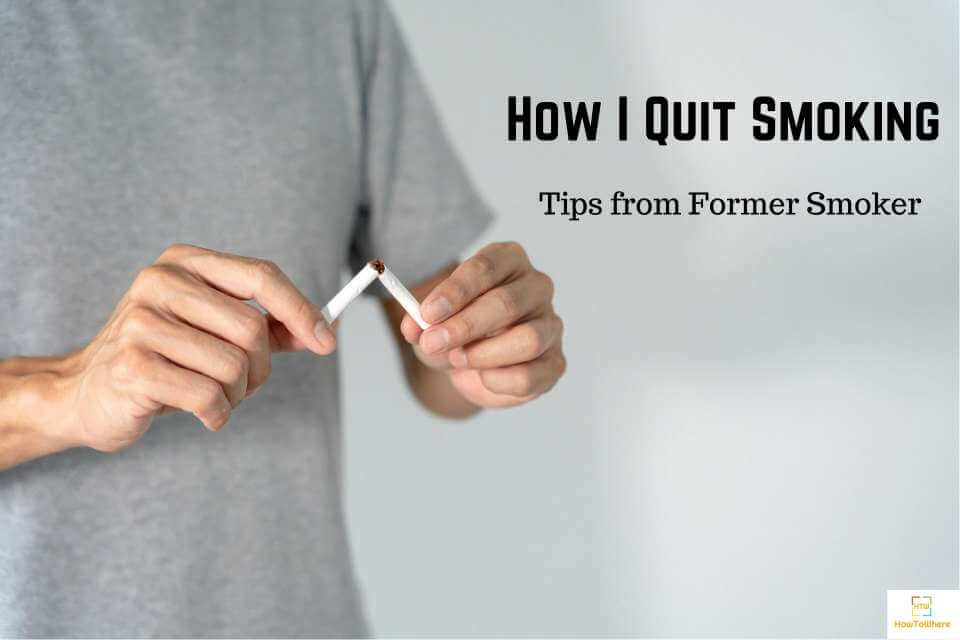Smoking is an addiction that can have serious health consequences, and quitting can be a daunting task. However, with the right approach and support, you can increase your chances of successfully quitting smoking. I quit smoking two years ago and have seen tremendous improvement in my health and well-being. In this comprehensive guide, I will share various strategies, tips, and resources to help you on your journey to becoming smoke-free.
Understanding the Challenges of Quitting Smoking
Quitting smoking is not easy, and it’s important to recognize the challenges you may encounter along the way. Like many other smokers, I would shut down any discussions about quitting or the dangers of smoking. Lecturing or health warnings had no impact. I knew I was spending dollars on an addiction that was harming me in multiple ways.
To quit smoking, I had to fight the emotional, psychological and physical triggers and temptations. There were no benefits of smoking. I wanted to stop smoking instead of needing to quit. For that, I had to cross the physical and mental barriers to quit successfully.
How to fight Nicotine Withdrawal pangs
When it comes to fighting withdrawal pangs, it is important to rely on evidence-based treatments. The National Institute for Health and Care Excellence (NICE) recommends several options for adults who smoke and wish to quit. These include medicinally licensed products such as bupropion, nicotine replacement therapy, varenicline, and nicotine-containing e-cigarettes.
I got a prescription for Varenicline (Chantix/Champix). The first three days at 0.5mg once daily had little impact. I continued to smoke as usual. During the next 4 days, I took 0.5mg twice daily. I could feel a bitter taste in my mouth whenever I smoked. The urge to smoke was not very frequent, and the number of cigarettes went down from 25 a day to 10.
From the 7th day onwards, I took 1mg twice daily. The urge to light up was going away. I could go for hours without feeling withdrawal pangs. I finally quit smoking on the 9th day. Varenicline helped with physical withdrawal pangs. Thankfully, there were no major side effects like nausea, mood swings, nightmares or sleep disturbances.
Here is the CDC resource on how to use Varenicline, its side effects and if it is the right choice for you to quit smoking. The tablets are available only on prescription and it is essential to consult your doctor before starting to take Varenicline.
My previous attempts to stop smoking with nicotine gums/NRT, and e-cigarettes vaping were unsuccessful. I now understand that to quit smoking, I had to stop any nicotine intake completely. Nicotine Replacements or cutting down did not work for me. Cold turkey with no nicotine whatsoever helped me finally quit smoking.
How to Fight Physiological Addiction
Allen Carr’s Easyway to Stop Smoking is a great book for anyone looking to quit. While Varenicline helped with physical withdrawal symptoms, the Allen Carr’s Easy Way To Stop Smoking helped break the emotional and mental dependence on nicotine. The book helped me realize how smoking was adding stress to my life and I could free myself from being a slave to addiction.
The nicotine withdrawal pangs subsided after 3-4 days and were not that severe. Allen Carr’s book helped break the cycle of physiological addiction. The book allowed me to see the negative impact of nicotine on my emotional and mental health. My daily routine and social life improved after I stopped smoking.
How did I stop smoking?
I was on day 6 of the Varenicline dose when I started reading Allen Carr’s book. Two days later, I completed reading the last page of the book and put out my last cigarette. I continued to take Varenicline for the next few weeks to avoid any physical cravings. However, after reading the book, the mental chains from addiction were broken and I knew I was never going to take another puff ever again.
Top Tips from Former Smokers to quit successfully
To maximize your chances of successfully quitting smoking, consider the following tips:
1. Audit Past Attempts
Assess previous attempts to quit and try something new and promising to increase your chances of success.
2. Frame Quitting as Escaping
Instead of viewing quitting as giving up, consider it as a way to escape the harmful effects of smoking. Embrace the freedom you will experience once you are smoke-free.
3. Avoid Quitting Buddies
While having a quit buddy may seem helpful, it can actually derail your own progress if they are not successful. Focus on your own journey and prioritize your success.
4. Set a Quit Date
Commit to a quit date and stick to it. Avoid continuously delaying it out of fear. Choose a method you are comfortable with, and remember that there is nothing to fear and everything to gain.
5. Politely Decline Offered Cigarettes
When offered a cigarette after quitting, politely decline and say, “No thanks, I don’t smoke.”
6. Avoid the “One Won’t Hurt” Mentality
Once you are free from smoking or vaping, never underestimate the power of a single cigarette or vape. Stay committed to your decision and avoid relapses.
7. Get Rid of Cigarettes or Vapes
After quitting, remove all cigarettes or vapes from your surroundings. Keeping them “just in case” can undermine your commitment to quitting and increase the risk of relapse.
8. Find Healthy Alternatives
Substitute smoking with healthier activities when cravings strike. Engage in physical exercise, deep breathing exercises, meditation, or hobbies that keep your hands busy. Chew sugar-free gum or snack on fruits and vegetables to satisfy oral cravings.
9. Manage Withdrawal Symptoms
Be prepared for withdrawal symptoms such as irritability, anxiety, cravings, and difficulty concentrating. These symptoms are temporary and will fade over time. Stay hydrated, get enough sleep, and consider medication to ease the process.
10. Practice Stress Management
Develop healthy ways to manage stress, as it is a common trigger for smoking. Engage in relaxation techniques like yoga, mindfulness, or deep breathing. Find activities that help you unwind and reduce stress levels. Read Allen Carr’s Easyway to Stop Smoking for tips on how to avoid mental triggers of smoking.
Quitting smoking is a challenging journey, but with the right support and resources, success is within reach. By adopting a healthy lifestyle, positive mindset, implementing evidence-based treatments, utilizing available resources, and following the top tips for quitting, you can significantly increase your chances of becoming smoke-free. Remember, your health and well-being are worth the effort.

Hunaid Germanwala is a digital marketer and content creator at Health Products For You since 2014. He has an MS from Ulm University in Germany. His mind is always buzzing with creative ideas and is eager to explore new perspectives. His motto in life is “Better to Light the Candle than to Curse the Darkness.”














Leave a Reply